Motorcycle Investor mag
Subscribe to our free email news
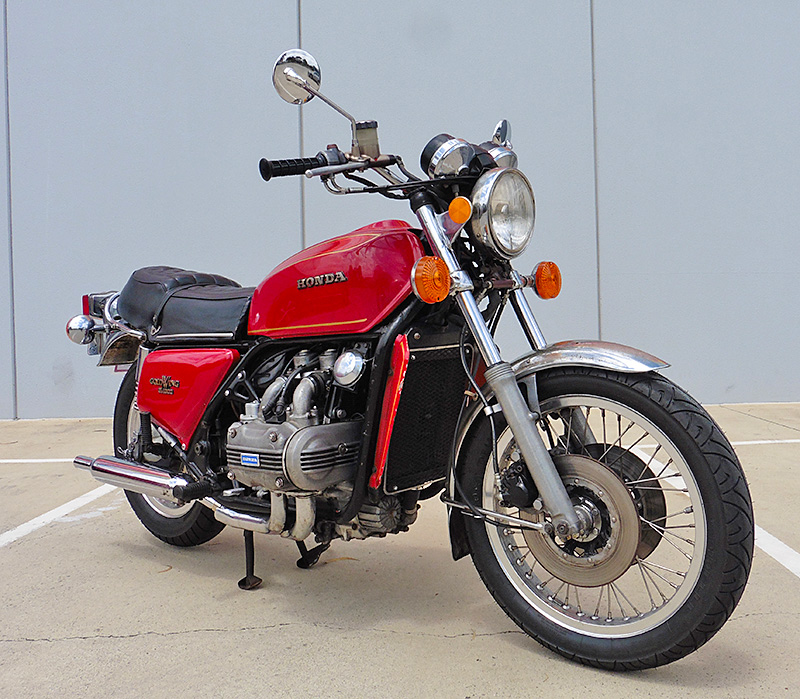
Up and Rolling

Our bikes - 1975 Honda GL1000 Gold Wing
(by Guy ‘Guido’ Allen,Nov 2021)
After months of faffing around, we've finally hit the road
Lockdowns, shipping delays, parts shortages...gotta love 'em. Under normal circumstances, getting our recently-purchased GL1000 up and registered should have taken a few weeks, a month tops. But no. This little exercise has taken closer to six months. We lost a couple just waiting to get the machine out of New South Wales and down to Melbourne in Victoria.
It was in good running order, so the plan was to fly up to Wollongong and ride it home, then sort things out from here. No dice. Assorted state premiers were opening and shutting borders at a baffling pace, and so we eventually caved in to the inevitable and hired a transporter.
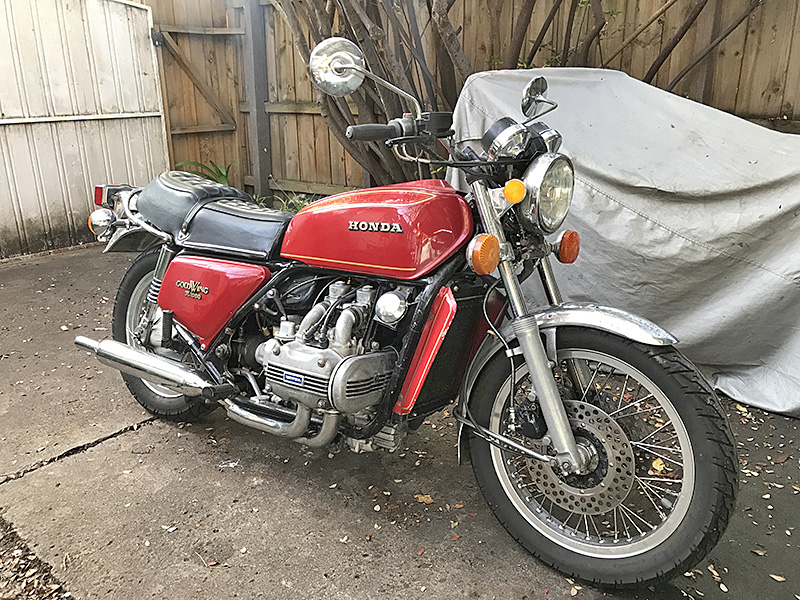
Once the bike turned up (above), we decided to do a few things to return it to a something that was visually closer to stock. So the heavily-drilled brakes discs were swapped for second-hand stockers, and the standard master cylinder (which came with the Honda but had been swapped for a later unit) returned to its throne on the handlebar.
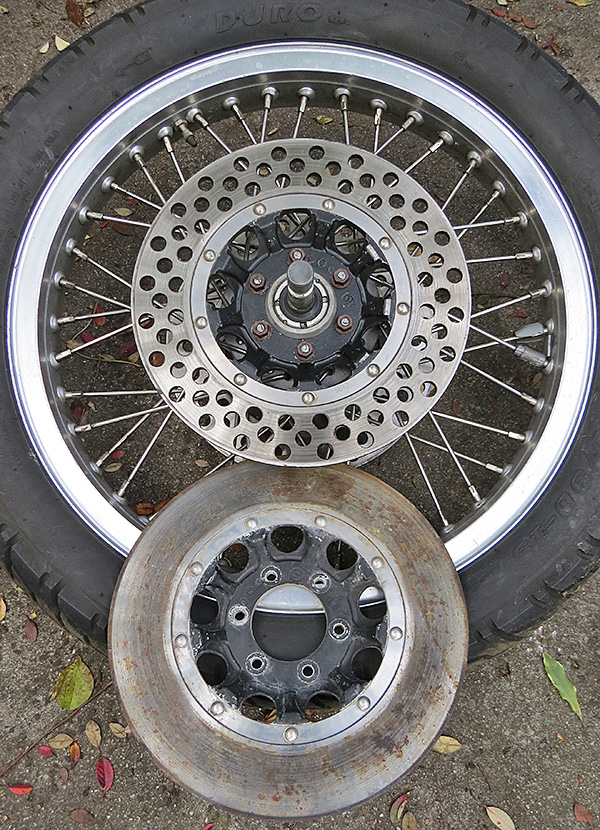
That's a decision not everyone will go with. In fact the later master cylinder (with a more favourable leverage ratio) and drilled discs should perform better than the standard set-up. However there were a few reasons for changing back: I wasn't convinced that discs drilled by an unknown person would get through a local roadworthy inspection; I could live with the seventies braking; And the bike was so close to stock that I wanted it taken back as far as reasonably possible.
On that last point, while I have nothing against modded motorcycles, a near-stock Wing is nearly always going to be worth more.
We then flicked the mirrors for better quality units and fitted a fresh battery. I wasn't wild about the tyres, so they had to go. We decided to shoot it across to Pablo's Motorcycle Tyres in sunny Mulgrave for rubber and a roadworthy certificate. Rick and crew were given a free rein (with the advice I cared about grip before mileage) and opted for Pirelli Sport Demon. Early impressions are they're a good match to the bike, with decent grip and feel.

As for the roadworthy inspection, two issues were raised: One of the indicator lenses was faded and needed to be changed, and the handgrips had broken ends. The crew at Pablos were a little shocked when quoted $40 for a standard lens, but I was simply delighted they could still get one 46 years after the bike was built. While they were on a roll, they grabbed a set of original handgrips.
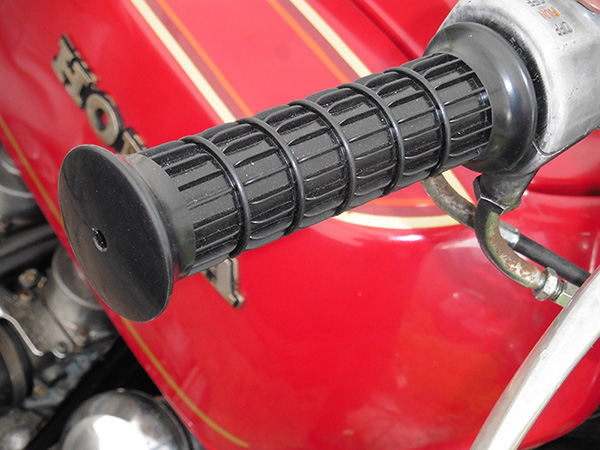
With that done and dusted, we were finally ready for club rego. The Vic club permit system is excellent, allowing 45 or 90 days of use in a year, with the former costing a touch over $100 to set up by the time you get a new plate and pay the assorted fees.
The end result is a bike that is whole and running but is still a long way from being the proverbial oil painting. There is no intention to restore it, as I want it in good working shape that can be used and risk getting knocked a little. Essentially a 'classic' that I can feel comfortable taking on a long trip.
There are however one or two little things to be addressed. One irritation is the blue rocker cover badge on the left side has dropped off and it's unique to this model. There is a seller in the USA that has made replicas, but to my eye they're a bit overdone and garish. In the end, I've managed to source a pair of used covers (yes, one more than I actually need, but what the hell...) complete with badges.
I also have a lithium battery on order. While I've already put a sealed unit in, experience with lithium has proven they're more robust, quicker to charge and have the extra grunt that can make all the difference in starting an old motorcycle. This one is a little slow to wake up and I haven't yet tracked down what the problem might be. The plugs are running a perfect colour, and the points ignition will be the next thing to look at closely.
One slightly worrying issue is that occasionally the starter clutch refuses to engage. Changing it is a pig of a job, requiring engine removal. Now the online owner forums are a little bit reassuring on this score. They say the issue is usually oil/grease literally gumming up the works, because the engines are often turned over without running them to full temp. At very least, they say, you should run the engine until the thermostat-controlled cooling fan kicks in. Better still, take it for a decent ride.
When the starter motor does spin out, I've found that turning the engine over with the removable kick-starter will usually get things going again.

One day, it might be nice to track down a decent original 4-1-2 exhaust system. Even the aftermarket OEM suppliers like CMNSL have run out of stock. There was someone building replicas in the UK, but they're out as well. For the time being it has what I'm told are new Triumph T120 pattern mufflers on it, which suit the bike. The resultant 4-2 pattern makes it sound a little like an angry Volkswagen Beetle.
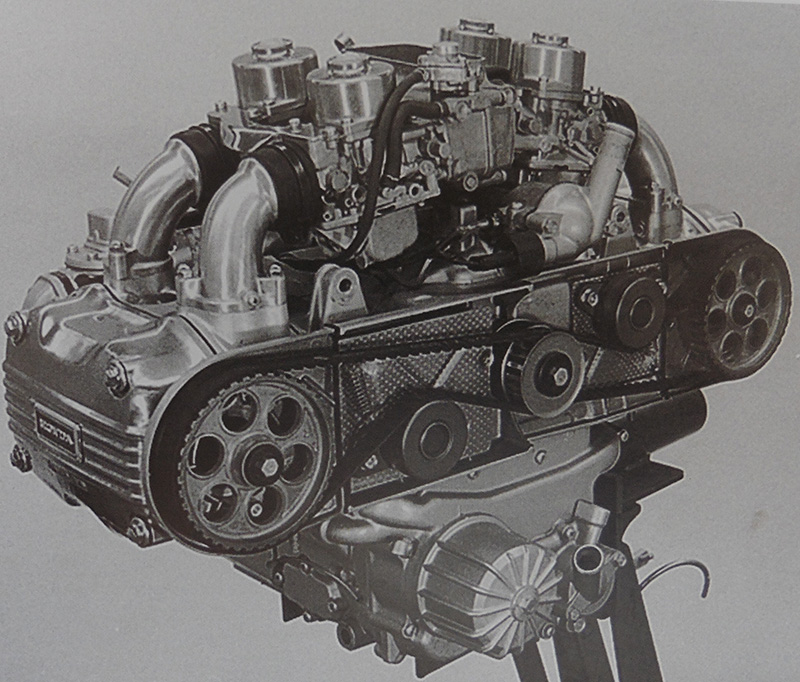
Which kind of brings me to the unusual architecture of this machine. I've long been aware of it to some extent, but it's when you're crawling over it in the shed that the whole thing sinks home. That liquid-cooled boxer four was designed with some automotive thinking in mind and, from Honda's point of view, was the next big evolutionary step after the CB750-Four.
Central to the design, and perhaps most controversial, was the use of an auto-style toothed drive belt for the overhead cams (one each side). Even now, there is fierce debate among owners over how often it should be changed. Some say every 100,000km, others say much longer. Honda's surprisingly sanguine advice is inspect every 100,000 and change if necessary. In any case, ours was done not so long ago by the previous owner.
At the same time, the GL was given a fresh water pump and fuel pump, while the carburettors were stripped and cleaned.

Externally there are all sorts of peculiarities. Such as the fuel pump hanging off the right cylinder bank (above) and the points set hanging off the left (below). One sensible feature is that, while the clutch pack is behind the engine, it is possible to replace it without major surgery.
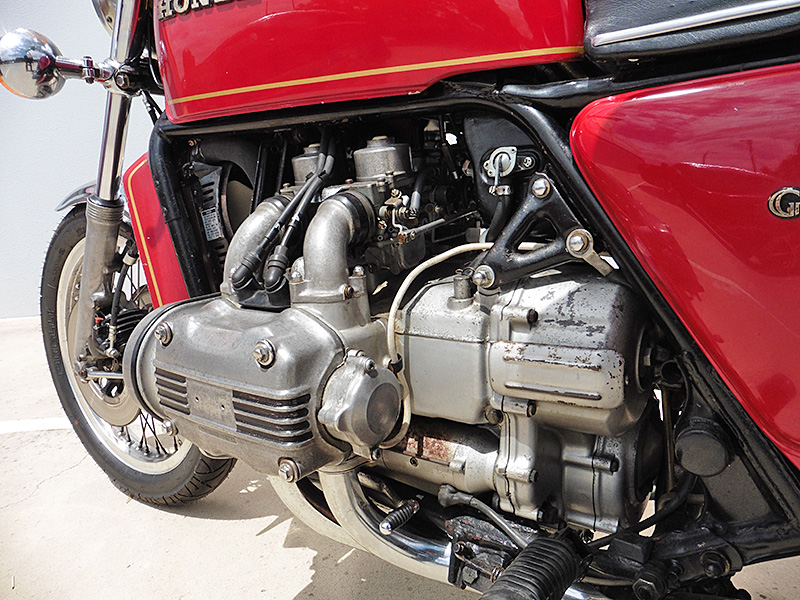

And then of course there's the famous fake fuel tank, with the gauge in the top panel, where the real tank is under the seat. This was quite a novelty back in the mid-seventies.

The centre of the 'tank' holds a toolkit and glovebox...
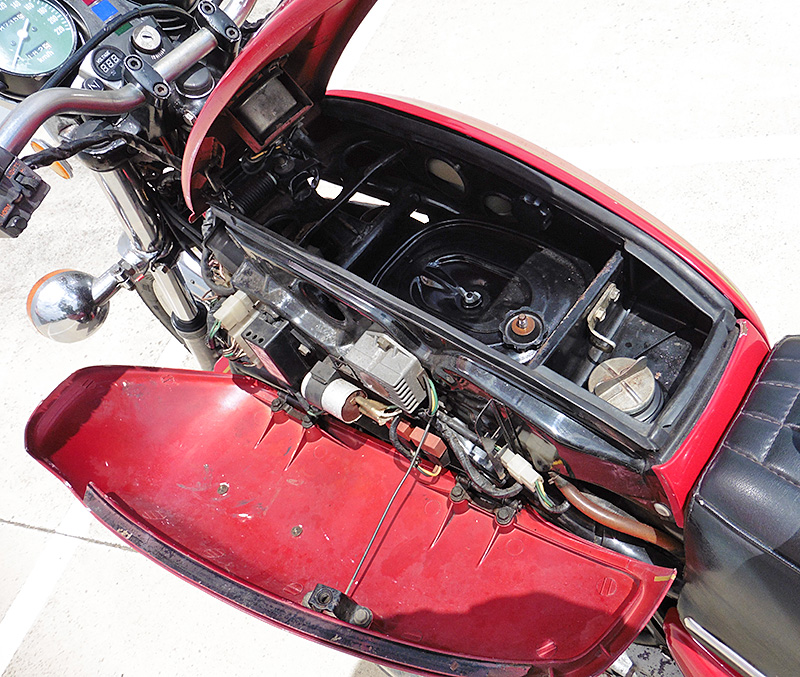
The left side gives access to a lot of the electrics, such as regulator/rectifier. Note the access to the air filter with a wing-nut in the centre...

While the right side has the coolant overflow and provides somewhere to store the removable kick-starter.
So, after all of that. what's it like to ride? These were once considered by some to be a giant and impossibly complex piece of machinery, too car-like to be viable. These days, it's dwarfed by any number of offerings in the market, including a current Goldwing.
It weighs around 290 kilos and you notice the heft when parking or generally shuffling in the shed. It does however have lots of steering lock and (by current standards) a reasonable wheelbase, so the turning circle is surprisingly good.
While 84 horsepower isn't much these days, for the time it was enough to rate this as a halfway serious performance bike, as evidenced by this period test at Classic Two Wheels. Ian Falloon, in his book on the series (see below) suggests Honda may have been conservative in its power claims for the machine.
Back in 1975, Two Wheels magazine recorded a pretty decent dragstrip time, before burning out a clutch. Brian Cowan, the tester, commented: "The one clean run we’d accomplished was a blistering 12.6 seconds for the standing 400 metres – a remarkable effort right there in Kawasaki 900 territory!" He went on to estimate the top speed at 210km/h.
It's hardly record-beating performance these days, but there is enough acceleration to get your attention and to overwhelm the chassis. The previous owner fitted fresh rear suspenders and did some work on the front, so it rides pretty well and, if anything, a little stiffer than you might expect.
Braking is very seventies, though it has more bite than the 1971 CB750-Four that also resides in the shed.
There is a tendency for the front end to fold in a little on slow turns and it rewards a confident approach with a bit of throttle in the tighter stuff. While we're not about to enter it in an historic race at Phillip Island, you can see it being a pretty good companion for a run into the countryside.
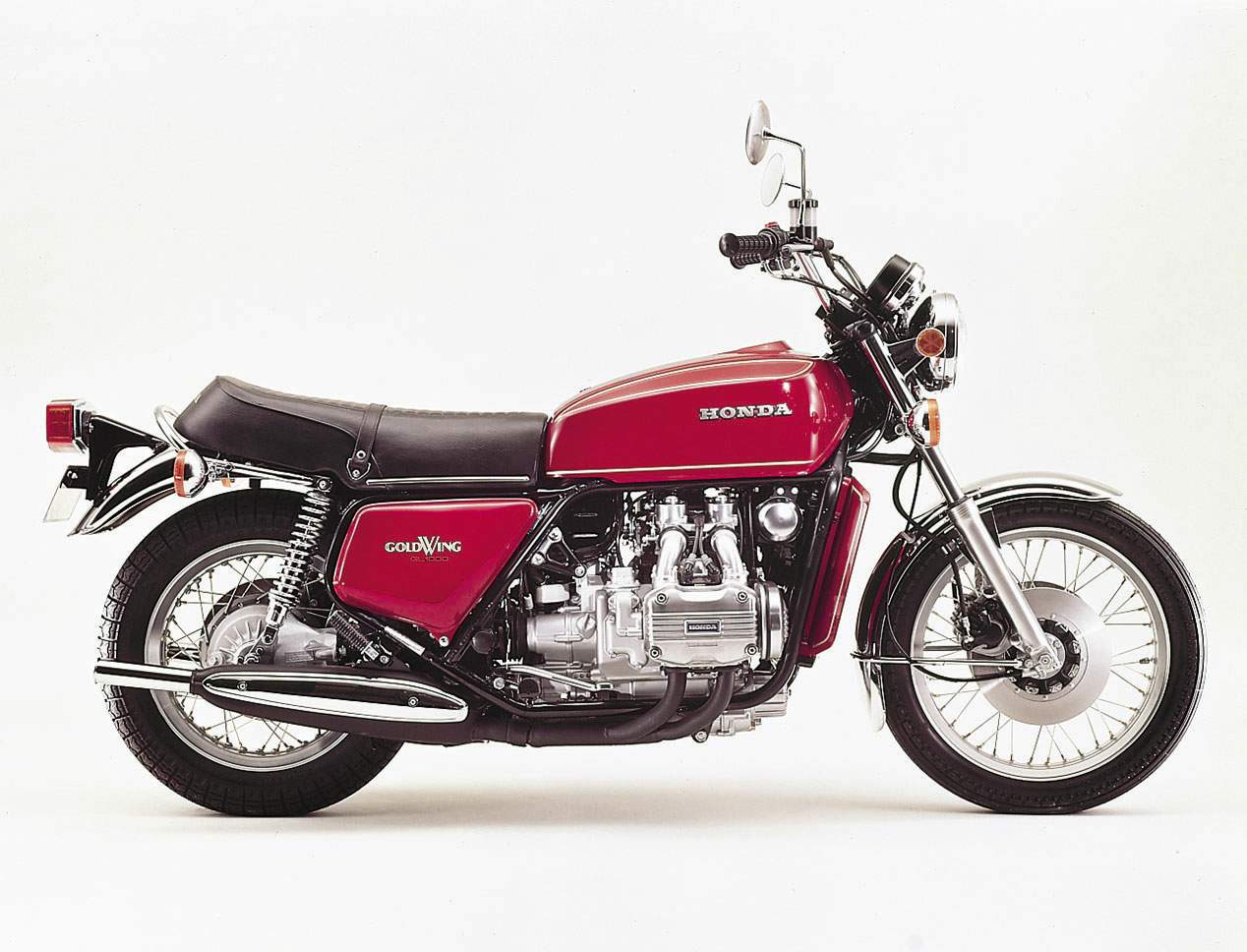
Comfort is okay. Oddly enough, the original bikes (above) had a very flat seat profile and were criticised for being too firm in the throne. Our example appears to have been re-upholstered at some stage with some extra padding or may be running a slightly later seat.
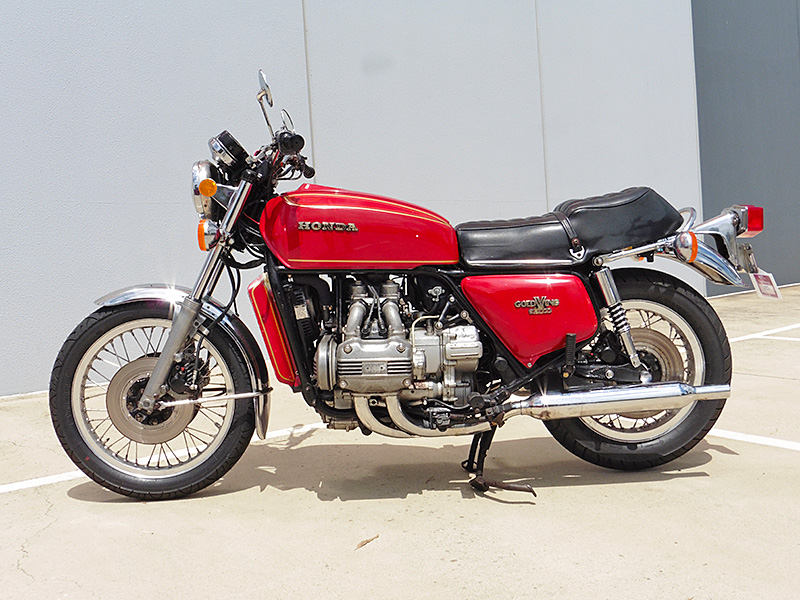
Honda was more than a little worried when it sold just 5000 of this first-year model of the Gold Wing (the K0), which was well below expectations. Those numbers soon rose to 25,000 a year for later versions, with the USA of course being the biggest market by far. In fact, Gold Wings ended up being built in Marysville, Ohio, for many years.
Back in the shed, with the 'Wing pretty well settled in
we now turn our attention back to the not-quite-finished Ducati 860 GT. Watch this space...
More on this bike
More reading
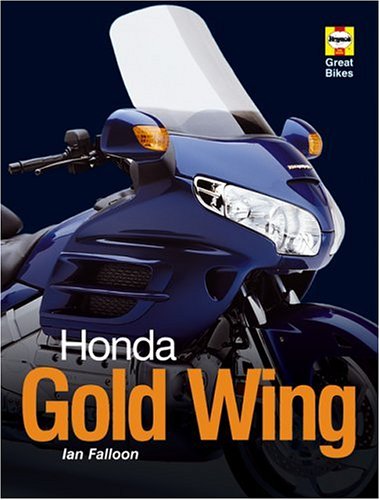
Ian Falloon's Gold Wing history (published by Haynes and covering up to the first 1800 series) is a must-have if you're an owner/enthusiast. It's out of print but is readily found online.
Classic Two Wheels 1975 Gold Wing road
test
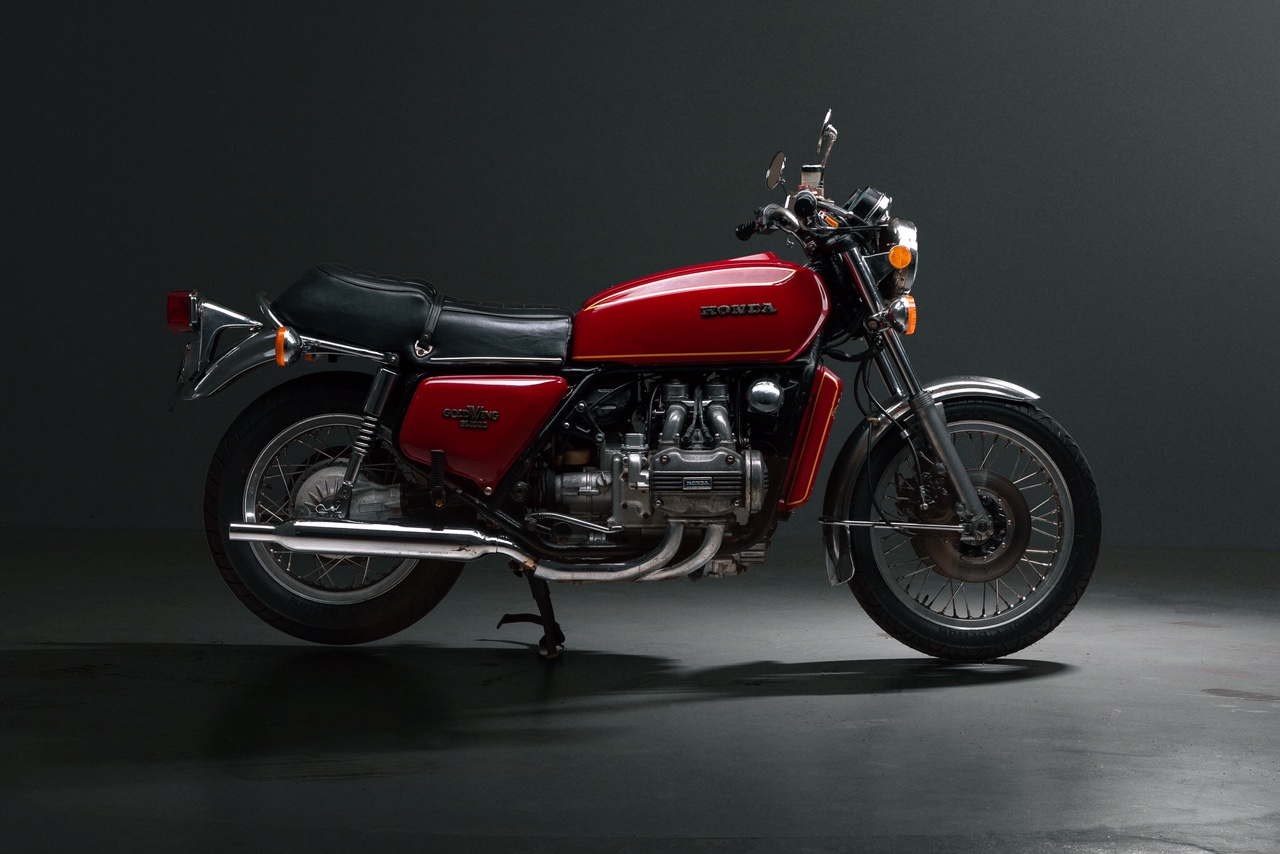
SPECS
1975 Honda GL1000 Gold Wing K0
ENGINE:
TYPE: Liquid-cooled, two-valves-per-cylinder, SOHC boxer four
CAPACITY: 999cc
BORE & STROKE: 72 x 61.4mm
COMPRESSION RATIO: 9.2:1
FUEL SYSTEM: 4 x 32mm Keihin CV carburettors
TRANSMISSION:
TYPE: Five-speed, constant-mesh,
FINAL DRIVE: Shaft
CHASSIS & RUNNING GEAR:
FRAME TYPE: Twin-loop steel
FRONT SUSPENSION: Conventional 37mm telescopic fork, 148mm
travel
REAR SUSPENSION: Twin shocks, 84mm travel
FRONT BRAKE: 2 x 232mm discs with two-piston calipers
REAR BRAKE: 250mm disc with one-piston caliper
DIMENSIONS & CAPACITIES:
DRY WEIGHT: 273kg
SEAT HEIGHT: 810mm
WHEELBASE: 1545mm
FUEL CAPACITY: 19lt
WHEELS & TYRES:
FRONT: Wire spoke alloy rim 3.50-H19
REAR: Wire spoke alloy rim 4.50-H17
PERFORMANCE:
POWER: 62kW (84hp) @ 7000rpm
TORQUE: 85Nm 5500rpm
TOP SPEED: 208km/h
PRICE WHEN NEW: Au$2470 (US$1800, GB£1350)



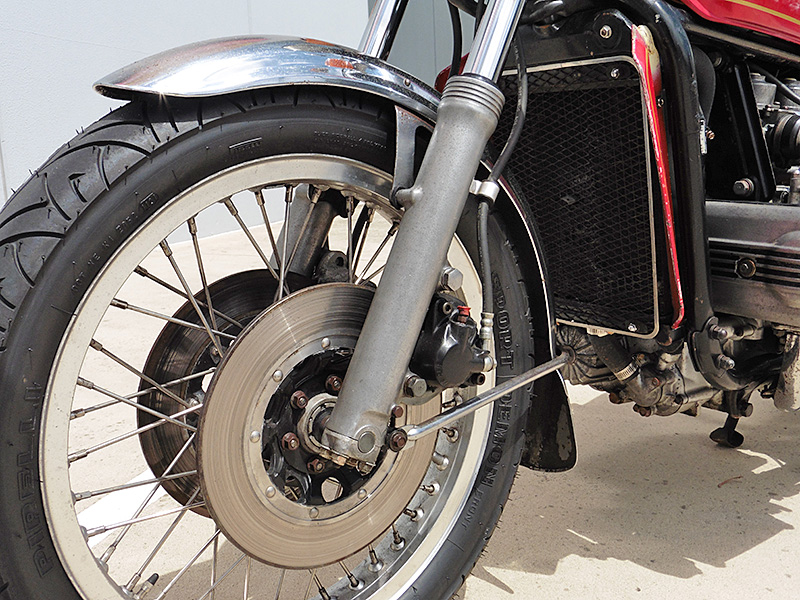

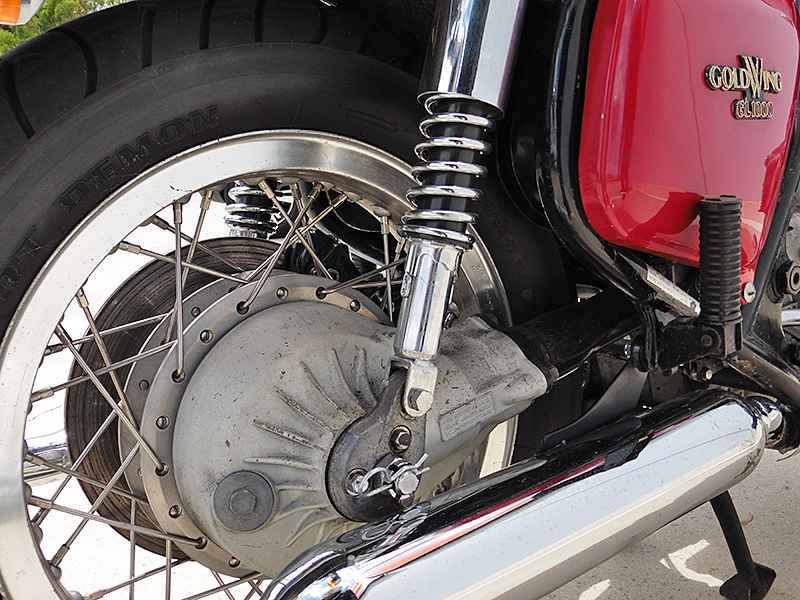

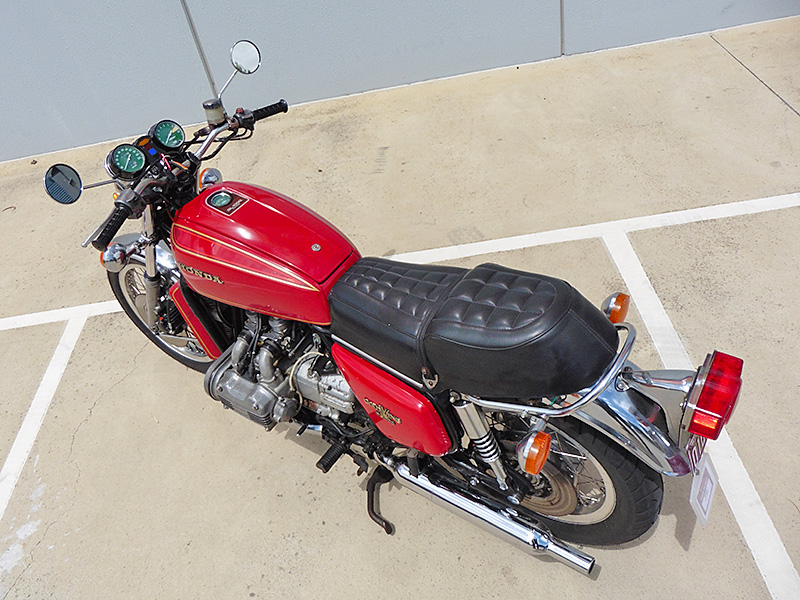
-------------------------------------------------
Produced by AllMoto abn 61 400 694 722
Privacy: we do not collect cookies or any other data.

Archives
Contact





